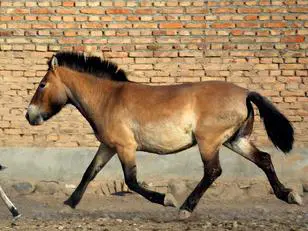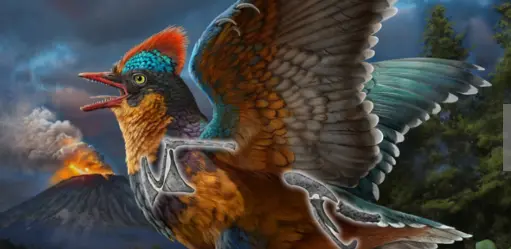Junggar Basin, the second largest interior basin of China, usually sees its lowest temperatures and a lack of forage from mid-November to mid-March, the most difficult time for the endangered Przewalski's horses.
Przewalski's horses are the only surviving horse subspecies never to have been domesticated. They have historically lived on grasslands that are now part of northwestern China's Xinjiang Uygur Autonomous Region and Mongolia.
The subspecies disappeared on the basin due to rampant hunting and environmental problems. From the 1980s, the Chinese government started a breeding program using horses brought back from Britain and Germany to repopulate the subspecies.
There are only about 2,000 Przewalski's horses across the world.
China released part of the imported wild horses in the Kalamaili national nature reserve in the Junggar Basin, Xinjiang, the original habitat of the rare horse.
Xinjiang set up a monitoring station in the nature reserve to keep a close eye on the horses. Rangers and 14 management personnel become the caregivers of Przewalski's horses there.
Meanwhile, a 50-hectare area has been enclosed not far from the monitoring station for horses that need to be taken care of.
"A total of 146 wild horses are living in the area. They belong to 20 families. The bigger families consist of one male horse, several maria and some foals, while the small families usually have two or three members," said Joldebek Ruhay, a worker at the nature reserve.
To help the wild animals survive in winter, the nature reserve provides more forage for the horses to supplement the feed, Joldebek added.
In addition, the temperatures drop to as low as minus 20 degrees Celsius in winter.
"The nature reserve had 30 new foals between May and July last year. They were weaned around November, but the weather became cold from then on. Less grass and water often pose a risk to the foals as well," said Arqin Waldan, a seasoned worker at the nature reserve.
During the winter months, rangers need 180 to 200 bales of clover and water for the horses every day. All the wild horses there will be released around mid-March.
"Such artificial intervention can help the expansion of Przewalski's horse population. After the population stays stable, the wild horses will eventually live on their own in the wild," said Ayijan Yeriken, who works at the nature reserve.
So far, there are over 430 Przewalski's horses in Xinjiang, accounting for 70 percent of the whole population of the subspecies in China. The nature reserve has more than 240 Przewalski's horses.
 简体中文
简体中文







